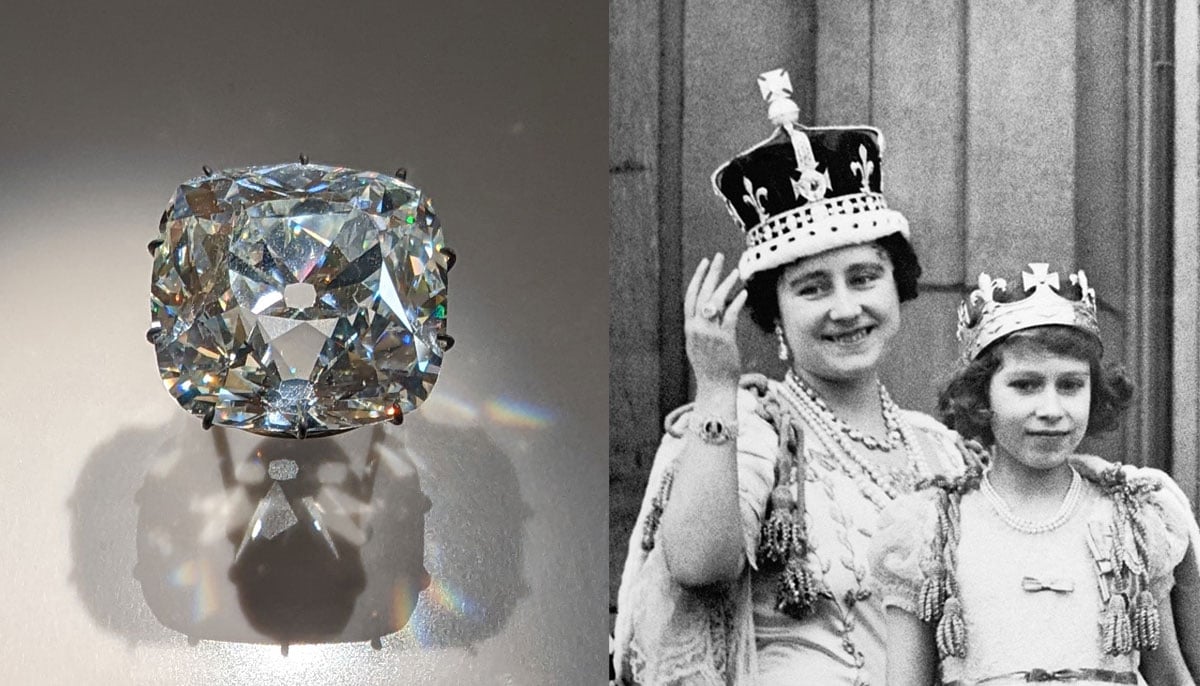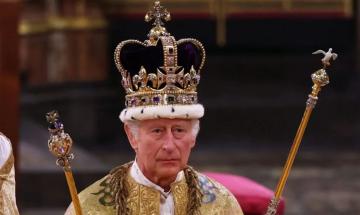Home / Royals
Louvre jewellery heist: The curious connection between French diamond left behind and Britain’s Koh-i-Noor
Discover the common origins between the cursed French and British diamonds

The Louvre Museum’s heist of October 19 has captivated the public’s imagination globally — a high profile jewellery theft, the likes of which was unheard of in contemporary times.
However, in the elaborate crime which cost the French authorities priceless gems housed in the museum’s Apollo Gallery, one intriguing piece remained untouched.
Priced at a whopping $60 million, the criminals did not dare touch France’s Regent Diamond, for an apparently simple reason — the jewel is believed to carry a curse, originating from its history in India.
Intriguingly enough, another cursed diamond of Indian origin has long been in the care of the British monarchy.
Legend of the Regent Diamond
All 140.6 carats of the French Regent Diamond are considered a cursed property, going back to the 18th century, when a slave in India discovered the valuable gem. The legend states that following the diamond’s discovery in 1701, the enslaved man fell prey to a treacherous sea captain’s false promises of escape and was killed after he kept the diamond safe for the scheming culprit in his leg wound.
Per Marie Claire, “The diamond eventually made its way to England and was cut down into several smaller stones, one of which was sold to Philippe II, who was named regent of Louis XV (hence the Regent Diamond name).”
The cursed stone further became part of the crowns worn by France’s Louis XV and Louis XVI at their respective coronation ceremonies. While the former died of natural causes, with his only misfortune being an unpopular monarch, the latter suffered a worse fate which seemingly passed on.
Louis XVI and his queen, Marie Antoinette, were famously executed in the French Revolution. Whereas the Regent Diamond had also become a part of one of the hats in the queen’s collection before her death at the hands of the furious French republic. Following her execution, the diamond disappeared, only to be rediscovered in a Paris attic and making its way to Napoleon Bonaparte thereafter.
“Like the French royals, the emperor’s fate was an unhappy one, and he died in 1821 after being exiled to the remote island of Saint Helena,” the magazine further stated.
Regarding the curiosity about the Regent Diamond being left behind by the thieves, Paris Prosecutor Laure Beccuau said, “I don’t have an explanation. It’ll only be when they’re in custody and face investigators that we’ll know what type of order they had and why they didn’t target that window.”
The feminine curse
On the other hand, the British held Koh-i-noor also possessed a curse of Indian origin, albeit with an interesting stipulation.
It is reported in folklore that the diamond’s wearer is warned through a Hindu description which states that “he who owns this diamond will own the world, but will also know all its misfortunes. Only God or woman can wear it with impunity.”
The Kansas City based custom jewellers, Vulcan’s Forge shared that over long periods of history, the controversial gemstone “traded hands among various Hindu, Mongolian, Persian, Afghan, and Sikh rulers, who fought bitter and bloody conflicts to own it.”
“Every prince who was in possession of the diamond would ultimately lose his power if not his life,” it was further stated.
Following its controversial looting by the British troops in the 19th century, the diamond which has been claimed by modern day India, Pakistan, and even Afghanistan, currently sits firmly in the crown of Queen Elizabeth’s mother, known as the Queen Mother.














